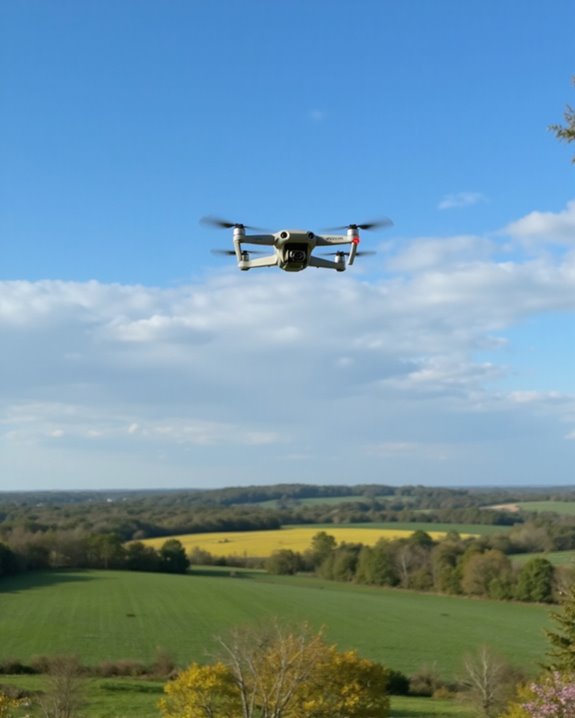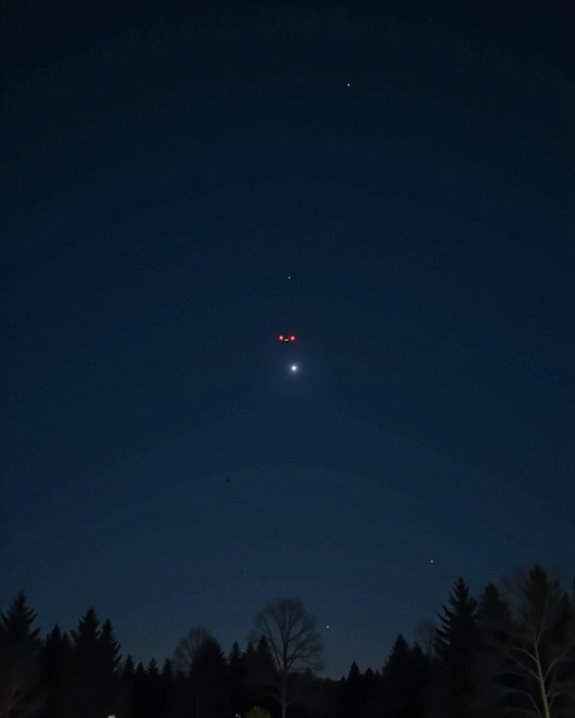The correct spelling is “D-R-O-N-E,” a five-letter word with a straightforward phonetic pattern and no silent letters. This versatile term originated from Middle English words for male honeybees, which don’t produce honey! If you’re writing about flying devices, buzzing sounds, or lazy people, the spelling remains consistent. Many people mistakenly type “dorne” when rushing. Practice with flashcards or the memory trick “a drone flies alone” to master this word for all your technical or beekeeping conversations.
Key Takeaways
- The five-letter word “drone” is spelled D-R-O-N-E with a straightforward pronunciation and no silent letters.
- Common spelling errors include reversing letters to form “dorne” or confusing with similar-sounding word “drown.”
- The word follows a simple consonant-consonant-vowel-consonant-vowel pattern with a long “o” sound.
- “Drone” is pronounced as /drəʊn/ in UK English and /droʊn/ in US English.
- The spelling remains consistent across all contexts, whether referring to flying devices, male bees, or continuous musical notes.
The Correct Spelling of “Drone”
Why do some people struggle with spelling the word “drone” correctly? The five-letter word is straightforward once you remember its pattern: D-R-O-N-E. Unlike many English words with silent letters or tricky combinations, “drone” follows a predictable phonetic structure that makes it relatively easy to master with proper Spelling Strategies.
Some writers might confuse it with similar-sounding words like “drown” or mistakenly add extra letters. The best Practice Methods include writing it several times, creating memory associations (like “the drone flies alone”), and using it regularly in sentences. Try creating flashcards with the correct spelling on one side and the definition on the other! Remember, whether you’re referring to the buzzing sound, the flying device, or even a male bee, the spelling remains consistent across all uses.
Etymology and Word Origins
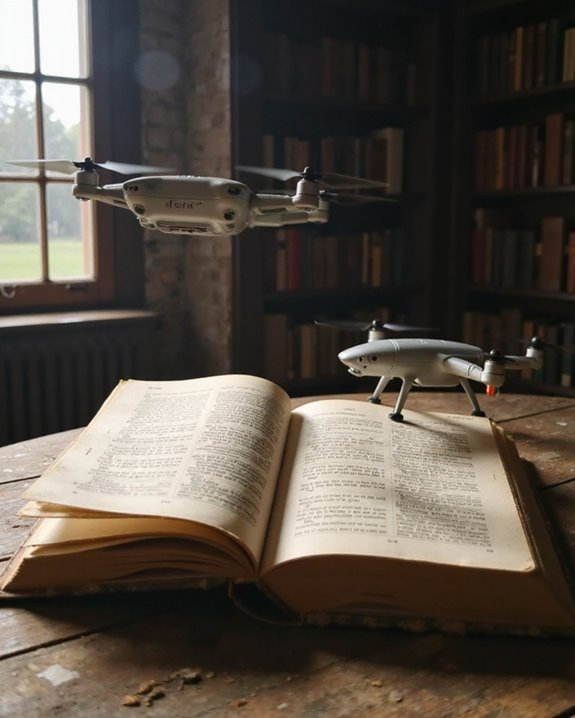
The fascinating journey of the word “drone” stretches back centuries through linguistic history, revealing how a simple five-letter term evolved to describe everything from bees to flying robots!
The word’s etymological theories trace to Middle English *drane* or *drone*, which referred specifically to male honeybees. This word derivation follows a clear path through Old English (*dran*, *dræn*) back to Proto-Germanic roots (*dran-*). Linguistic scholars note similar forms across Germanic languages, including Middle Dutch *drane* and Old High German *treno*. By the 1520s, “drone” gained its figurative meaning as an “idler,” inspired by the male bee’s non-honey-producing lifestyle! The sonic association emerged in the early 1500s, describing humming sounds, while the technological application to unmanned aircraft only appeared in the mid-1930s, connected to the Royal Navy’s “Queen Bee” target aircraft.
Common Misspellings and Errors
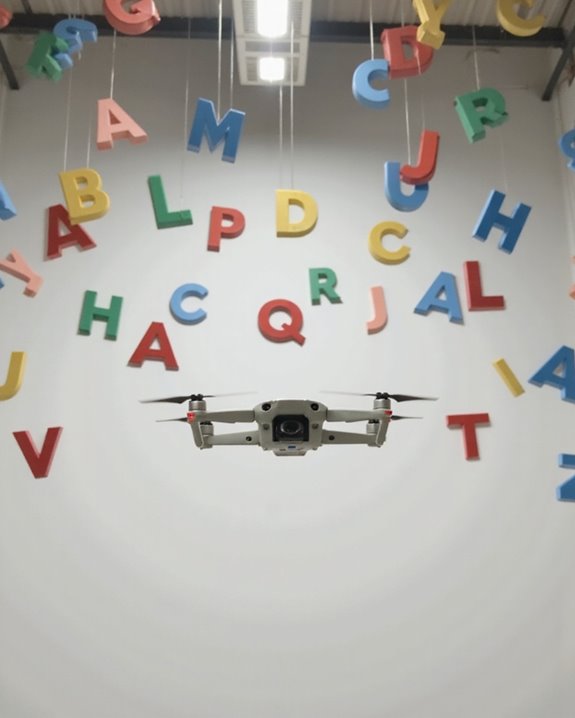
Despite its simple five-letter structure, “drone” frequently falls victim to a surprising array of spelling mishaps! Common errors include reversing letters to create “dorne,” confusing it with similar-sounding words like “drown,” or making typographical errors when typing quickly on small keyboards.
Error Prevention strategies are essential for professionals and casual writers alike. Using grammar tools, conducting multiple proofreading passes, and maintaining focus while writing can dramatically reduce these mistakes. Remember, a single typo can have significant consequences!
The Typo Impact shouldn’t be underestimated – misspellings can damage credibility, create confusion in communication, and even affect your content’s search visibility online. Next time you write about these buzzing technological marvels, take that extra moment to confirm you’ve spelled “drone” correctly!
Pronunciation Guide
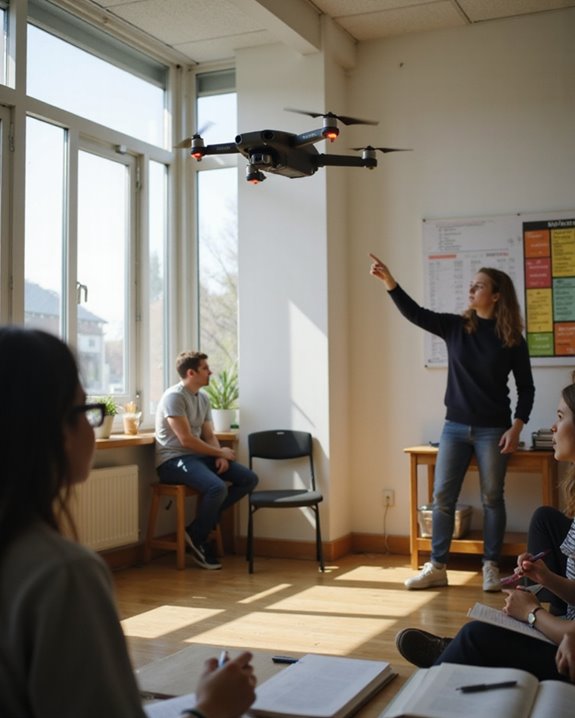
Now that we’ve tackled those pesky spelling errors, saying “drone” correctly matters just as much as writing it! Pronunciation varies between UK English (/drəʊn/) and US English (/droʊn/), with the primary difference in that middle vowel sound.
For effective audio practice, focus on breaking down the word into its component sounds: /d/, /r/, /əʊ/ (or /oʊ/), and /n/. Cambridge Dictionary offers excellent audio examples of both variants! Vowel exercises are particularly helpful, as mastering that long “o” sound makes all the difference. Try repeating “oh” several times before attempting the full word. Many advanced FPV drones feature low-latency HD transmission to ensure smooth and immersive video feedback during flight.
Different Meanings Across Contexts
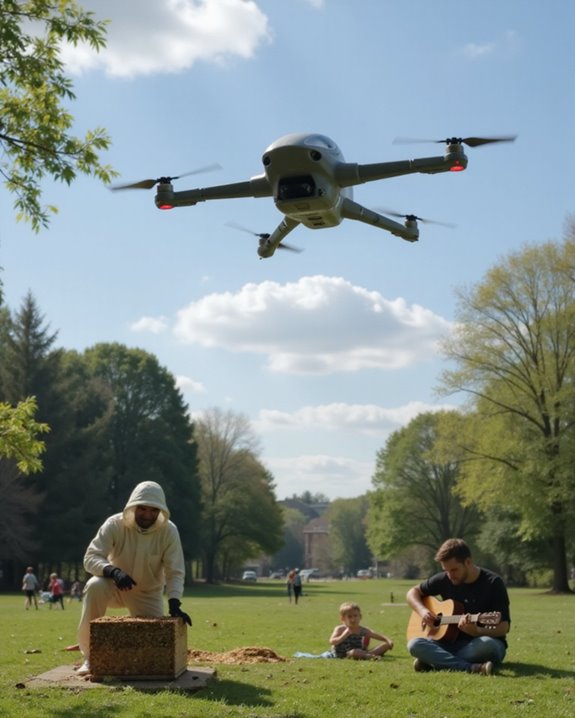
Versatility defines the word “drone” across multiple domains, making it one of the English language’s most fascinating linguistic chameleons! While many associate it with flying cameras and military technology, the term has roots in Bee Biology, referring to male honeybees that don’t produce honey but exist primarily for mating with the queen.
The word also thrives in Musical Applications, where it describes a continuous bass note that anchors melodies in traditional instruments like bagpipes. You might recognize this sound in folk music from Scotland or India! Beyond these uses, “drone” can describe someone speaking monotonously, or even serve as a pejorative term for lazy individuals who, like their insect namesakes, don’t contribute productively. Next time you hear “drone,” consider which of these rich meanings the speaker intends!
Technical Terminology and Jargon
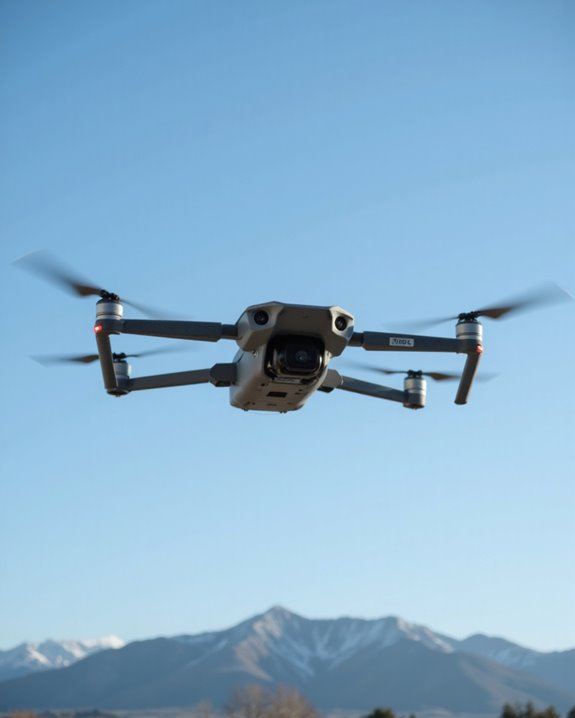
When diving into the world of drones, enthusiasts quickly encounter a specialized vocabulary that might initially seem like a foreign language! Terms like UAV (Unmanned Aerial Vehicle) and UAS (Unmanned Aircraft System) replace the simple word “drone” in professional contexts.
Control Systems form the backbone of drone operation, with Flight Controllers acting as the brain that interprets pilot commands. Various Sensor Types work together to keep these flying machines stable and responsive—barometric pressure sensors monitor altitude, while ultrasonic sensors help maintain precise hovering close to the ground. Accelerometers detect changes in movement, contributing to the drone’s stability during flight.
Understanding technical terms like Pitch, Yaw, and AGL (Above Ground Level) becomes essential for mastering drone operation. Don’t worry though, this terminology gets easier with practice!
Additionally, factors such as battery life and payload capacity are critical to consider for effective drone performance and flight duration.
Historical Evolution of the Term
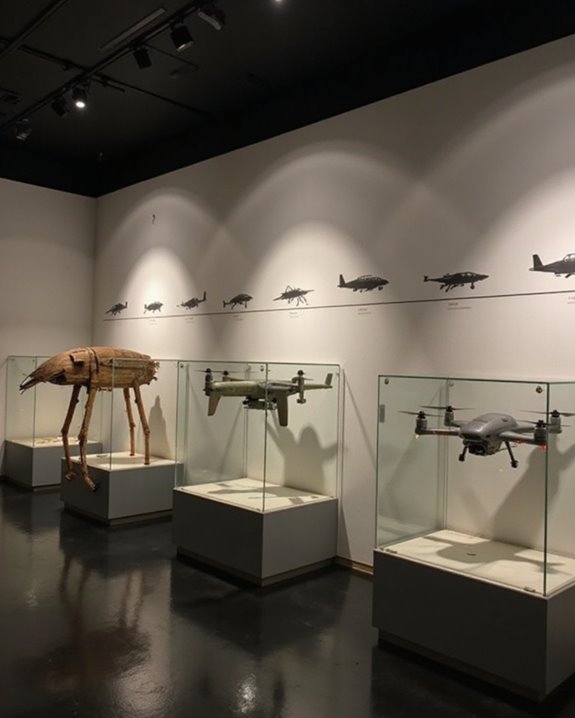
The term’s Aviation Shift came surprisingly late, around 1935, when the British Royal Navy’s remote-controlled “Queen Bee” aircraft inspired Admiral William Standley to adopt “drone” for similar unmanned vehicles. The connection was delightfully logical: if the original craft was a “Queen Bee,” then its followers must be drones! This naval terminology quickly spread through military circles and eventually into our everyday vocabulary, carrying its buzzing heritage into the technological age.
International Variations and Spellings
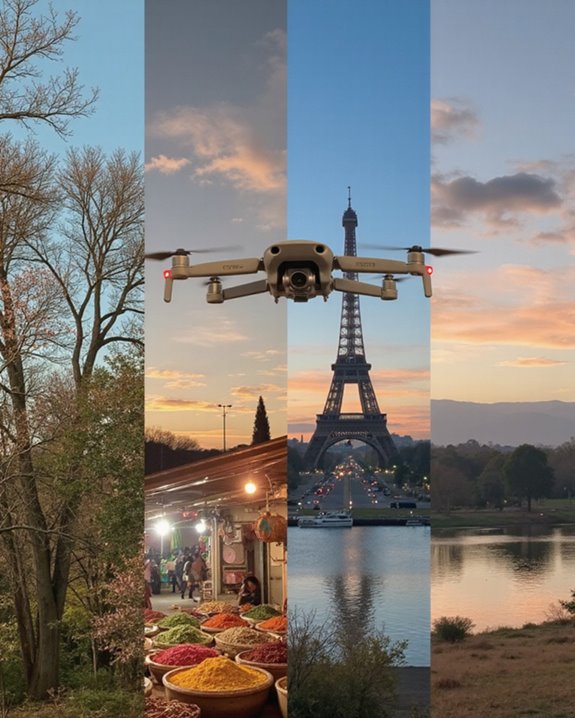
While the term “drone” took flight in English-speaking military circles, its journey across international borders reveals fascinating linguistic patterns!
The Francophone world embraces “drone” wholeheartedly, with France and Belgium adopting it for both regulatory and everyday use. Meanwhile, Anglo-Saxon countries prefer more technical terminology—the UK and US gravitate toward “UAS” (Unmanned Aerial System) in official contexts, highlighting the entire system rather than just the flying component. For international aviation authorities, “RPAS” (Remotely Piloted Aircraft System) reigns supreme as the formal, globally-recognized designation.
When it comes to Regional Adaptations, the internet has democratized terminology, with “drone” and “UAV” dominating public discourse. Foreign Equivalents show minimal spelling variations, though numerous acronym interpretations exist—from Unmanned Air Vehicle to Uninhabited Aircraft Vehicle!
Battery technology, such as the TB30 battery system, plays a crucial role in enabling the extended operation times and reliability that modern drones require.
Frequently Asked Questions
Are Drones Legal to Fly in Residential Areas?
The aerial surveillance devices are indeed permissible in residential zones, with adherence to FAA guidelines. However, operators must navigate potential privacy issues and verify local zoning laws don’t impose additional restrictions on these mechanical sky visitors.
How Much Does a Basic Commercial Drone Cost?
Basic commercial drones typically cost between $5,000 and $20,000. Entry-level models offer budget options at the lower end, while those with specialized sensors or higher payload capacities command premium drone costs.
What Training Is Required to Operate a Military Drone?
Military drone operation requires rigorous training programs, including basic technical instruction, simulator experience, and mission-specific preparation. Certification levels vary by branch, with officer candidates requiring additional leadership training beyond technical drone operation qualifications.
Can Drones Fly in Bad Weather Conditions?
Like Icarus facing the elements, drones face limitations in adverse weather. Most cannot operate in heavy precipitation due to inadequate rain resistance, while wind tolerance varies by model. Regulations also restrict flying in poor visibility conditions.
How Long Can the Average Drone Stay Airborne?
The average consumer drone maintains flight duration of 25-45 minutes, with multi-rotors typically lasting 20-30 minutes. Fixed-wing drones offer extended airborne time of 1-3 hours due to superior battery efficiency and aerodynamic design.

